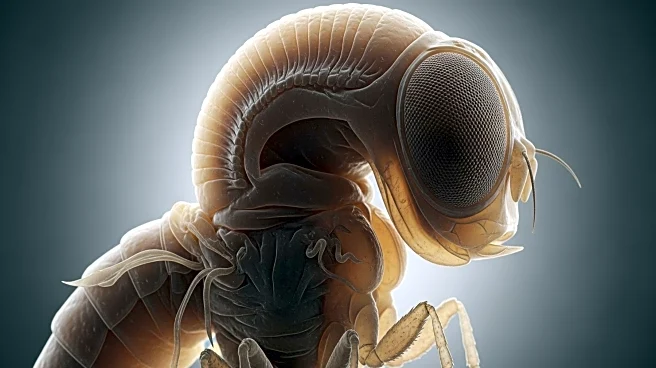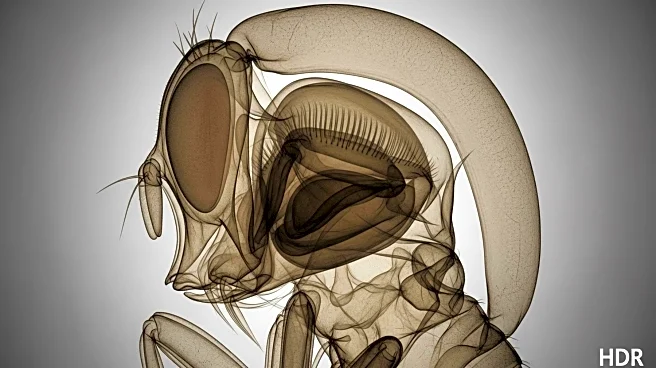What's Happening?
A recent study has uncovered the evolutionary significance of the cephalic furrow, a tissue fold in fly embryos, particularly in the fruit fly Drosophila melanogaster. Researchers at the Max Planck Institute of Molecular Cell Biology and Genetics in Dresden, Germany, have demonstrated that this fold plays a crucial mechanical role in stabilizing embryonic tissues during development. The study combined computer simulations with experimental data to show that the timing and position of the cephalic furrow are vital for preventing mechanical instabilities in embryonic tissues. The cephalic furrow, an evolutionary novelty, is formed at the boundary between the head and trunk of fly embryos and is controlled by specific genes. Despite its genetic control, the fold does not contribute to the formation of specific structures and unfolds later in development, leaving no trace.
Why It's Important?
The findings highlight the impact of mechanical forces on the evolution of developmental features in embryos. The cephalic furrow's ability to absorb compressive stresses during embryonic development suggests that mechanical challenges may have driven its evolution. This research provides empirical evidence that mechanical forces are not only crucial for the development of embryos but also for the evolution of developmental processes. Understanding these forces can offer insights into the genetic and physical factors that shape the evolution of new features in organisms, potentially influencing future studies in evolutionary biology and developmental genetics.













